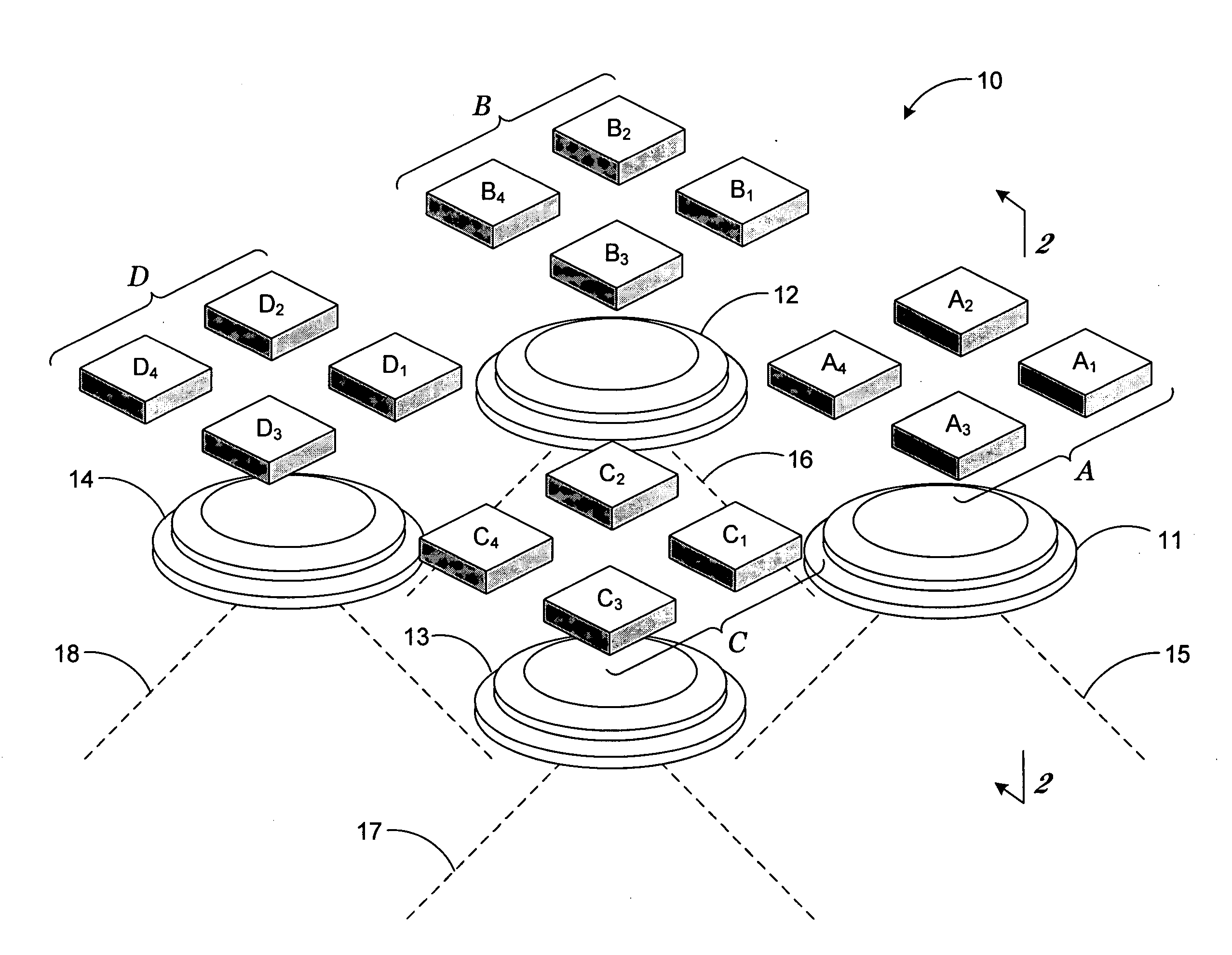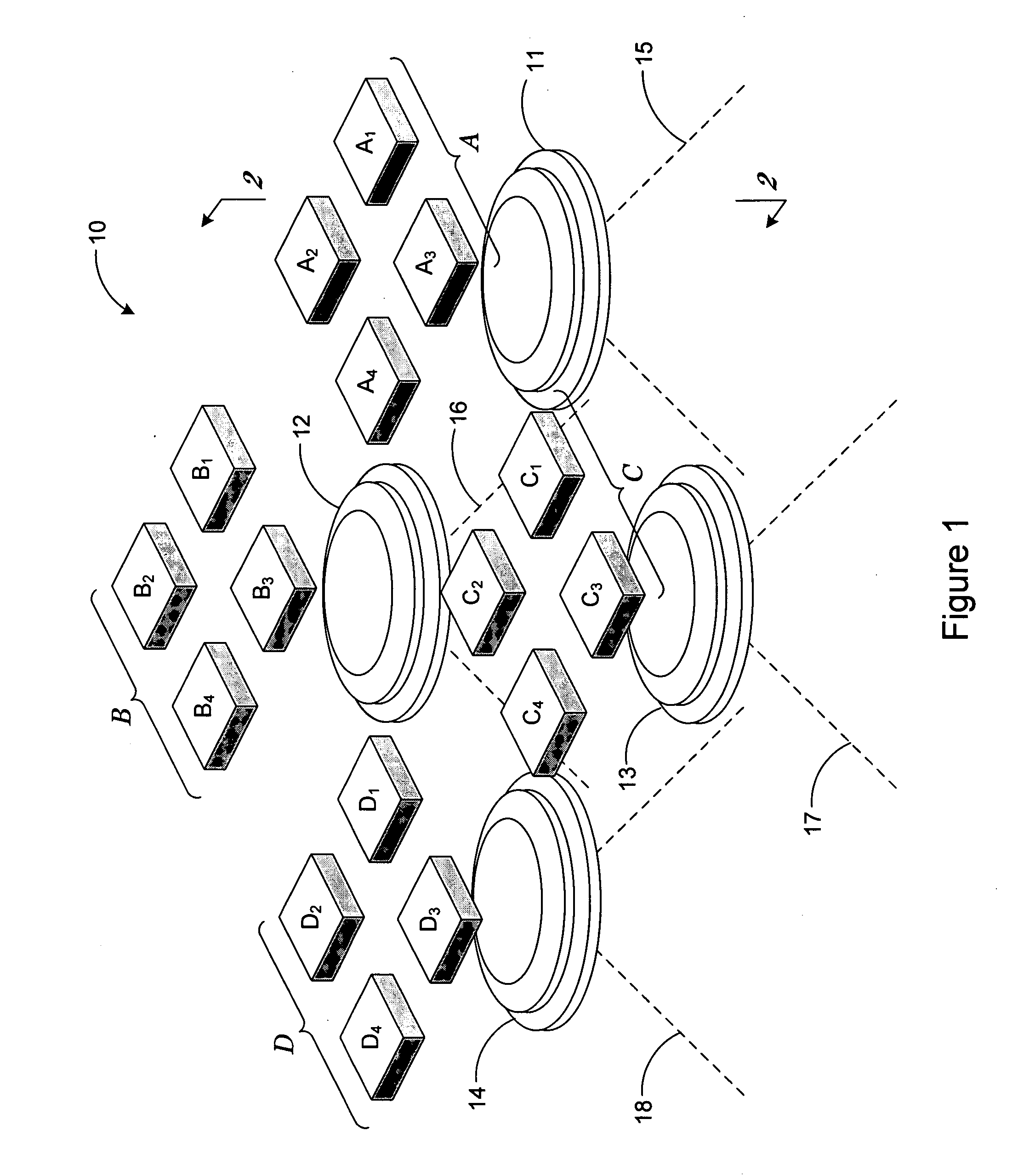Digital imaging system and method using multiple digital image sensors to produce large high-resolution gapless mosaic images
a digital imaging and mosaic image technology, applied in the field of digital imaging systems, can solve the problems of pixel-count sensors, difficult to readout, and custom-built low-yield focal plane arrays (fpas) which due to custom fabrication are often prohibitively expensive, and achieve the effects of large images, difficult production, and difficult readou
- Summary
- Abstract
- Description
- Claims
- Application Information
AI Technical Summary
Benefits of technology
Problems solved by technology
Method used
Image
Examples
Embodiment Construction
[0053]Turning now to the drawings, FIGS. 1-12 show a first exemplary embodiment of the digital imaging system of the present invention, generally indicated at reference character 10 in FIG. 1. In particular FIG. 1 shows a perspective view of the system 10 having four optic modules 11-14 and a corresponding set of digital image sensors which can be, for example, pixelated focal plane array sensors or pixelated CCDs. In particular, optic module 11 is shown having a field of view 15 for focusing scenes onto sensor set A comprising four sensors A1-A4 along its optical axis (see O11 in FIG. 2); optic module 12 is shown having a field of view 16 for focusing scenes onto sensor set B comprising four sensors B1-B4 along its optical axis (not shown); optic module 13 is shown having a field of view 17 for focusing scenes onto sensor set C comprising four sensors C1-C4 along its optical axis (see O13 in FIG. 2); and optic module 14 is shown having a field of view 18 for focusing scenes onto se...
PUM
 Login to View More
Login to View More Abstract
Description
Claims
Application Information
 Login to View More
Login to View More - R&D
- Intellectual Property
- Life Sciences
- Materials
- Tech Scout
- Unparalleled Data Quality
- Higher Quality Content
- 60% Fewer Hallucinations
Browse by: Latest US Patents, China's latest patents, Technical Efficacy Thesaurus, Application Domain, Technology Topic, Popular Technical Reports.
© 2025 PatSnap. All rights reserved.Legal|Privacy policy|Modern Slavery Act Transparency Statement|Sitemap|About US| Contact US: help@patsnap.com



